Memahami Alahan Berkaitan Tilam
Alergen Biasa dalam Tempat Tidur
Peralatan tempat tidur adalah perumah biasa untuk pelbagai alergen, terutamanya hama habuk, spora acuan dan bulu haiwan peliharaan, yang boleh merengsakan individu yang sensitif. Alergen ini selalunya boleh membawa kepada gejala seperti bersin, batuk, dan kerengsaan kulit, menjejaskan kualiti tidur dan kesihatan keseluruhan. Statistik menunjukkan bahawa kira-kira 20 juta orang di A.S. mengalami alahan hama habuk, menonjolkan kebimbangan lazim dalam isu berkaitan tempat tidur. Dengan memahami sumber ini, kami boleh mengambil langkah proaktif untuk mengurangkan pendedahan, seperti memilih bahan peralatan tempat tidur hipoalergenik dan kerap membersihkan persekitaran bilik tidur.
Cara Hama Habuk Mencetuskan Reaksi
Hama habuk ialah perosak mikroskopik yang hidup subur dalam persekitaran yang hangat dan lembap, dan bahan buangan mereka adalah punca biasa tindak balas alahan seperti bersin, gatal-gatal dan juga serangan asma. Alergen ini boleh memberi kesan ketara kepada individu yang mempunyai sistem pernafasan yang sensitif. Penyelidikan menunjukkan bahawa menghapuskan hama habuk dari tempat tidur boleh membawa kepada pengurangan ketara dalam gejala alahan. Strategi seperti pembersihan biasa, mengekalkan tahap kelembapan di bawah 50%, dan menggunakan penutup kalis hama habuk adalah penting untuk meminimumkan kehadirannya di dalam tilam dan peralatan tempat tidur. Langkah-langkah ini bukan sahaja meningkatkan kesihatan tetapi juga meningkatkan kualiti tidur keseluruhan.
Kesan Acuan dan Bulu Binatang
Acuan dan bulu haiwan peliharaan adalah alergen tambahan yang boleh memburukkan lagi alahan apabila terdapat di tempat tidur. Acuan tumbuh subur dalam keadaan lembap, sering ditemui di tempat tidur yang tidak dikeringkan atau pengudaraan yang tidak betul, yang membawa kepada masalah pernafasan dan mencetuskan alahan. Penyedutan spora acuan boleh merengsakan mereka yang mempunyai asma. Begitu juga, bulu haiwan peliharaan terdiri daripada kepingan kecil kulit dan protein daripada air liur dan air kencing yang berterusan dalam tekstil dan tempat tidur. Menurut Yayasan Asma dan Alergi, hampir 30% individu yang mempunyai alahan juga alah kepada kucing dan anjing. Menguruskan alergen ini dengan betul dengan pembersihan yang kerap dan menggunakan penutup khas untuk tilam boleh mengurangkan kesannya, mengurangkan kemungkinan timbulnya alahan.
Bagaimana Pelindung Hypoallergenic Melawan Alahan
Teknologi Penghalang Dijelaskan
Pelindung tilam hipoalergenik direka menggunakan teknologi penghalang termaju untuk menyekat alergen daripada menyusup ke permukaan tilam. Teknologi ini bergantung pada struktur liang mikro yang membolehkan peredaran udara sambil menghalang alergen biasa seperti hama habuk dan bulu haiwan peliharaan dengan berkesan. Bagi individu yang sensitif, bukti daripada pengeluar menunjukkan bahawa pelindung ini boleh mengurangkan gejala alahan dengan ketara. Dengan menggabungkan teknologi sedemikian, ia menyediakan lapisan perlindungan yang berkesan untuk mereka yang mengalami alahan, memastikan persekitaran tidur yang lebih sihat.
Bahan Yang Menghalau Perosak Mikro
Pelindung menggunakan bahan seperti gentian sintetik dan kapas tenunan ketat yang berkesan dalam menghalau perosak mikro. Mereka sering dirawat dengan kemasan anti-mikrob, menghalang pertumbuhan hama habuk dan acuan. Kajian menunjukkan bahawa menggunakan fabrik khusus ini boleh mengurangkan kehadiran perosak dengan ketara dalam peralatan tempat tidur, menyumbang kepada kawasan tidur yang lebih sihat dan bebas alahan. Pilihan bahan memainkan peranan penting dalam meningkatkan keberkesanan pelindung terhadap alergen, menjadikannya komponen penting untuk mengekalkan tempat perlindungan yang selamat di dalam bilik tidur anda.
Kebolehnafasan vs. Imbangan Perlindungan
Mencapai keseimbangan yang betul antara kebolehnafasan dan perlindungan adalah penting untuk keselesaan dan keberkesanan. Fabrik tenunan yang terlalu ketat boleh menghalang aliran udara, mengakibatkan ketidakselesaan, manakala pelindung bernafas lebih baik dalam mengawal suhu dan menyediakan halangan alergen yang berkesan. Cadangan pakar mencadangkan memilih pelindung hipoalergenik yang menawarkan kedua-dua sifat bernafas dan pencegahan alergen yang teguh. Pelindung sedemikian adalah penting dalam memastikan tidur malam yang nyenyak tanpa menjejaskan faedah kesihatan, mengekalkan persekitaran tidur yang optimum.
Jenis Pelindung Tilam Hypoallergenic
Kemasan Kalis Hama Habuk
Sarung kalis hama habuk adalah penyelesaian komprehensif untuk individu yang ingin melindungi tilam mereka daripada alergen. Ia menyelubungi seluruh tilam dengan kandang berzip yang berkesan mengunci alergen, termasuk hama habuk dan pepijat katil. Kajian menyerlahkan bahawa penutup sedemikian boleh mengurangkan tahap alergen dengan ketara, yang membawa kepada hasil kesihatan yang lebih baik bagi mereka yang mempunyai alahan. Apabila memilih sarung kalis hama habuk, adalah penting untuk memastikan ia diperakui untuk pembendungan alergen, menjamin keberkesanannya dalam mewujudkan persekitaran tidur yang sihat. Pensijilan ini bukan sahaja menjamin perlindungan tetapi juga meningkatkan keyakinan pelanggan terhadap penyelesaian perlindungan ini.
Sarung Tilam Bed Bug Kalis Air
Sarung tilam pepijat katil kalis air menawarkan perlindungan pelbagai aspek dengan menghalang serangan pepijat katil dan melindungi daripada tumpahan dan kelembapan, yang merupakan punca utama pertumbuhan acuan. Seperti yang ditunjukkan dalam kajian pengurusan perosak, penutup ini memainkan peranan penting dalam mengekalkan persekitaran tidur yang bersih dengan bertindak sebagai penghalang terhadap alergen. Bagi mereka yang tinggal di kawasan yang mempunyai kejadian pepijat katil yang tinggi, memilih sarung tilam pepijat katil yang boleh dipercayai adalah amat kritikal. Sarung ini bukan sahaja memastikan ketenangan fikiran tetapi juga memanjangkan jangka hayat tilam dengan melindunginya daripada bahaya fizikal.
Rekaan Kalis Alergi Berzip
Reka bentuk kalis alahan berzip digemari ramai kerana keupayaan luar biasa mereka untuk mengandungi alergen, menjadikannya sesuai untuk individu yang sensitif kepada alergen. Mekanisme berzip menghalang alergen daripada masuk dan keluar, yang penting untuk pengurusan alahan yang berkesan. Selain itu, penutup ini mesra pengguna dan direka bentuk untuk menahan basuh biasa, mengekalkan keberkesanannya dari semasa ke semasa. Ulasan pakar sering memuji sarung berzip ini untuk perlindungan alahan yang komprehensif dan kemudahan penjagaan, menjadikannya pilihan yang sangat disyorkan untuk mengekalkan tilam yang bersih dan bebas alergen.
Ciri-ciri Penting untuk Melegakan Alahan
Bahan Hypoallergenic Disahkan
Apabila mencari pelindung tilam untuk melegakan alahan, utamakan yang dibuat daripada bahan yang disahkan sebagai hipoalergenik oleh badan terhormat seperti Asma dan Yayasan Alahan. Pensijilan ini menjamin bahawa produk telah menjalani ujian yang ketat untuk mengesahkan keberkesanannya dalam mengurangkan tindak balas alahan. Bukti yang dikumpul daripada ulasan pengguna seterusnya menyokong dakwaan bahawa bahan hipoalergenik yang diperakui memberikan kelegaan yang besar untuk individu yang mengalami alahan, meningkatkan keselesaan keseluruhan dan kualiti tidur mereka.
Pembinaan Kain Tenunan Ketat
Fabrik tenunan ketat adalah asas dalam menghalang alergen daripada menyusup dan merupakan komponen penting mana-mana produk peralatan tempat tidur hypoallergenic. Penyelidikan telah menyerlahkan keupayaan anyaman yang lebih ketat untuk mengurangkan kehadiran alergen dengan ketara pada permukaan tidur, memastikan persekitaran yang lebih sihat untuk penghidap alahan. Untuk memastikan rintangan alergen yang berkesan, pengguna harus memberi tumpuan kepada kiraan benang tertentu apabila memilih pelindung tilam, kerana butiran ini boleh mempengaruhi prestasi pelindung dalam mengelakkan alergen.
Sifat-Sifat Pengatur Suhu
Ciri-ciri pengawalan suhu adalah penting dalam mengekalkan keselesaan untuk tidur, kerana mencegah kepanasan melampau boleh mengelakkan gejala alahan yang semakin teruk. Sesetengah pelindung hipoalergenik menggabungkan teknologi penyejukan termaju yang direka untuk menghilangkan lembapan dan haba dari badan, memudahkan pengalaman tidur yang lebih sederhana. Pakar mengesyorkan jenis pelindung ini untuk individu yang sensitif terhadap turun naik suhu semasa tidur, kerana ia menyumbang dengan ketara kepada keselesaan tidur dan kesihatan keseluruhan.
Tips perawatan dan pemeliharaan
Garis Panduan Kekerapan Mencuci
Mengekalkan rutin mencuci biasa adalah penting untuk memaksimumkan keberkesanan pelindung tilam hypoallergenic. Untuk benar-benar melindungi daripada hama habuk dan alergen lain, anda disyorkan untuk mencuci penutup ini setiap 1-2 bulan, terutamanya semasa musim alergen tinggi seperti musim bunga dan musim luruh. Menggunakan air panas, sebaik-baiknya pada suhu sekurang-kurangnya 130°F, membantu dalam membunuh tetamu yang tidak diingini ini dengan berkesan. Selain itu, maklum balas pengguna secara konsisten menunjukkan bahawa mencuci rutin bukan sahaja meningkatkan kelegaan alahan tetapi juga meningkatkan kualiti tidur dan kesegaran keseluruhan.
Memelihara Lapisan Kalis Air
Memahami keperluan penjagaan khusus untuk lapisan kalis air adalah penting untuk memelihara integriti pelindung tilam anda. Pastikan anda membaca dan mengikut arahan pengilang, kerana kaedah mencuci yang salah boleh merosakkan ciri kalis air. Selepas pembersihan, adalah penting untuk mengeringkan pelindung dengan teliti, sama ada menggunakan mesin atau pengeringan udara, untuk mengekalkan keupayaan kalis air dan mencegah pertumbuhan acuan. Nasihat profesional menyerlahkan kepentingan penyelenggaraan yang betul, mencadangkan ketekunan sedemikian boleh memanjangkan jangka hayat produk sambil mengekalkan keberkesanannya.
Bilakah Anda Perlu Menggantikan Penyelubung Anda
Pelindung tilam hipoalergenik sebaiknya diganti setiap 3-5 tahun untuk memastikan perlindungan dan keberkesanan alahan yang optimum. Dari masa ke masa, bahan boleh haus dan menyimpan alergen, menjejaskan sifat perlindungannya. Penggantian tetap menjamin bahawa peralatan tempat tidur anda terus berfungsi sebagai penghalang yang boleh dipercayai terhadap alergen. Cadangan pakar menekankan bahawa pelindung yang lebih lama mungkin tidak menawarkan tahap pertahanan yang sama, menunjukkan kepentingan mengenali tanda haus dan bersikap proaktif tentang penggantian untuk manfaat kesihatan yang berterusan dan keselesaan tidur.


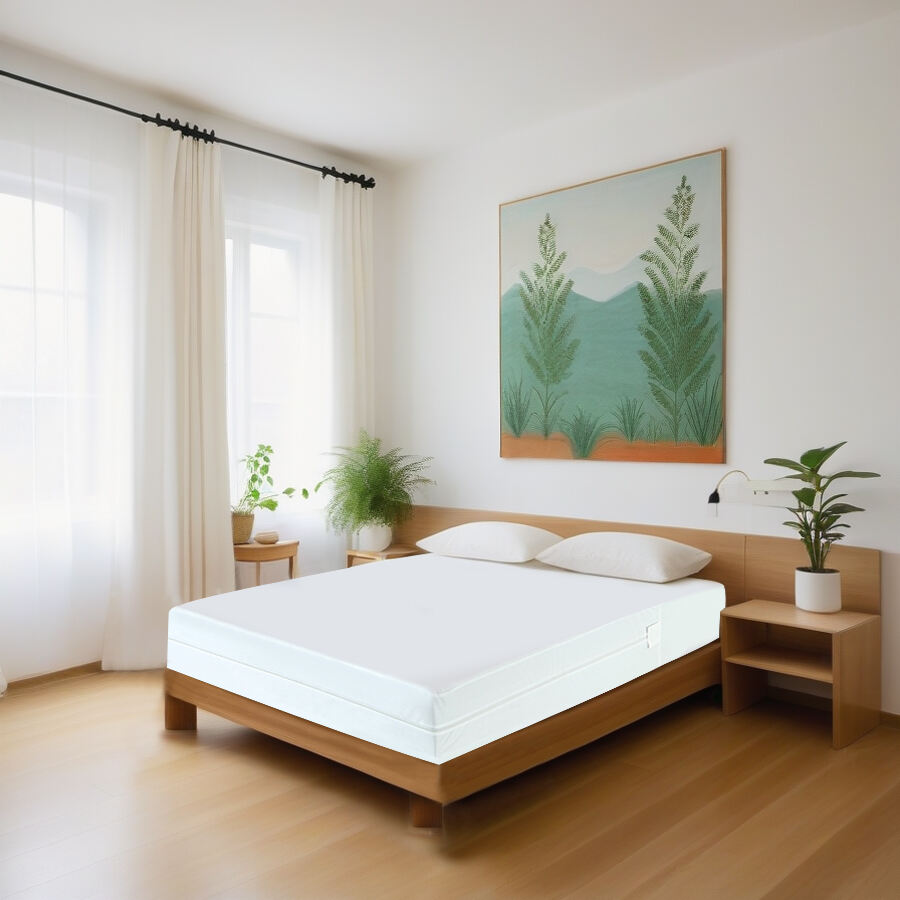



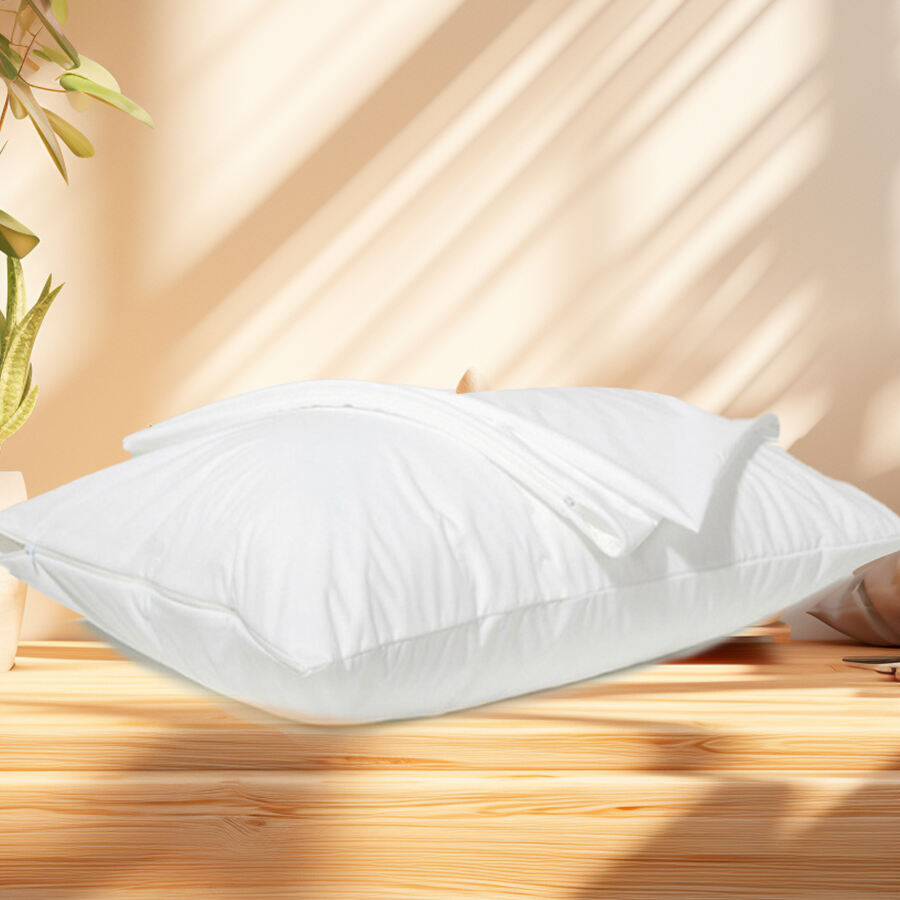













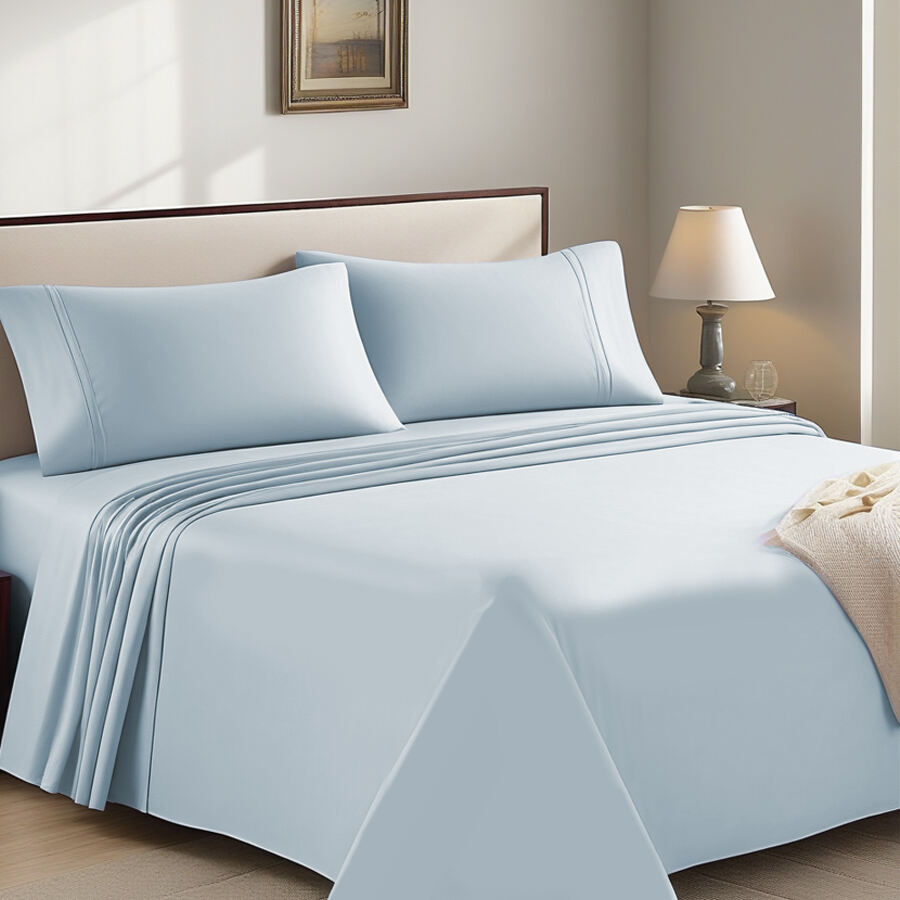


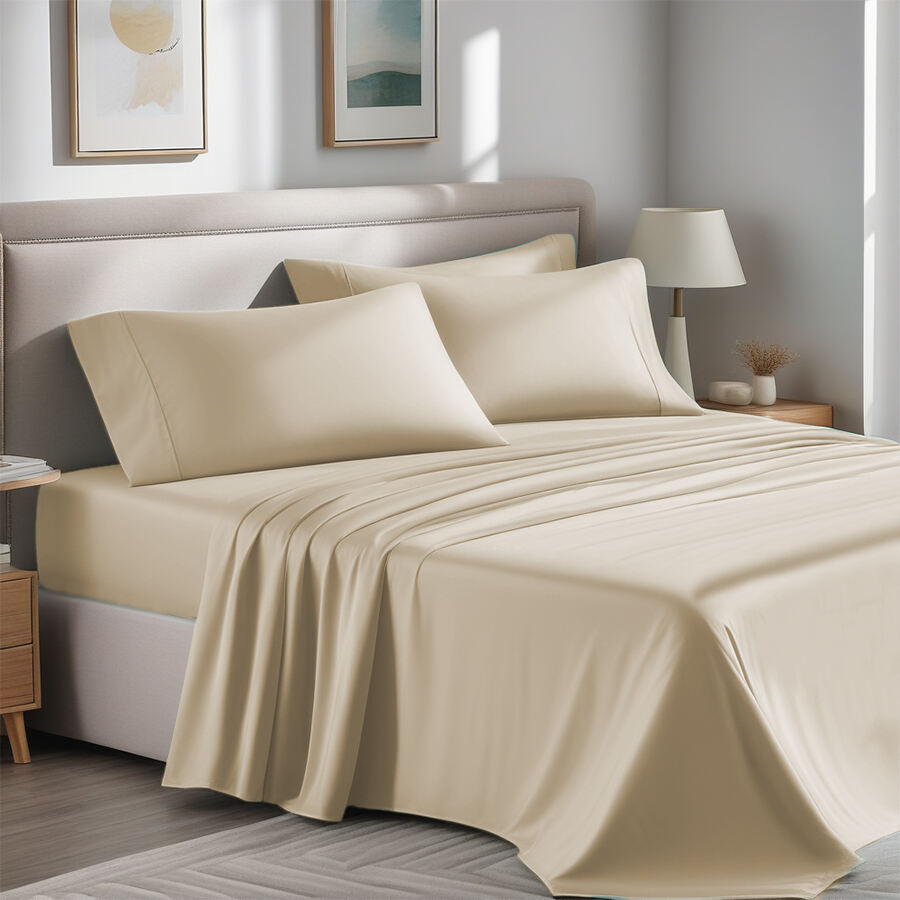




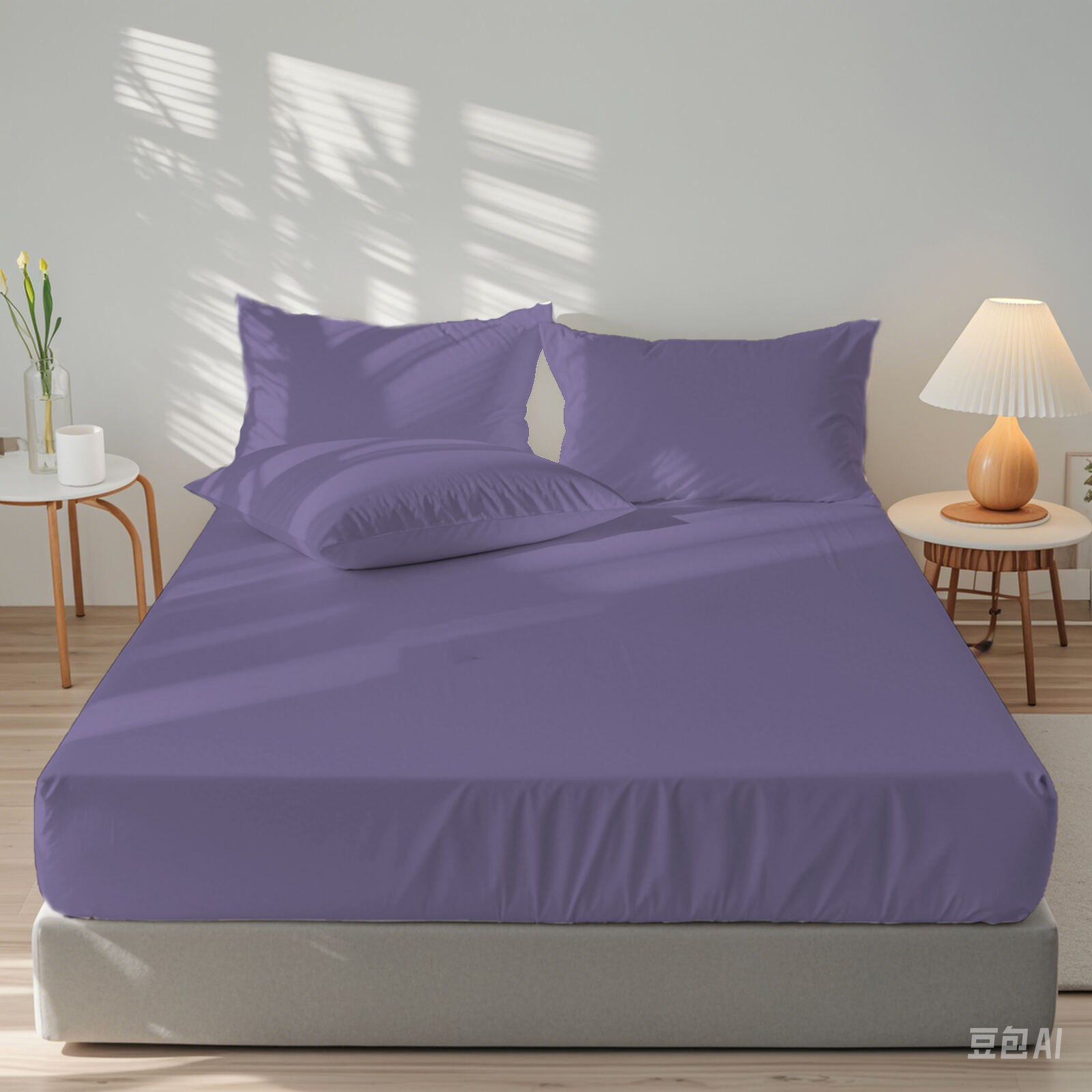
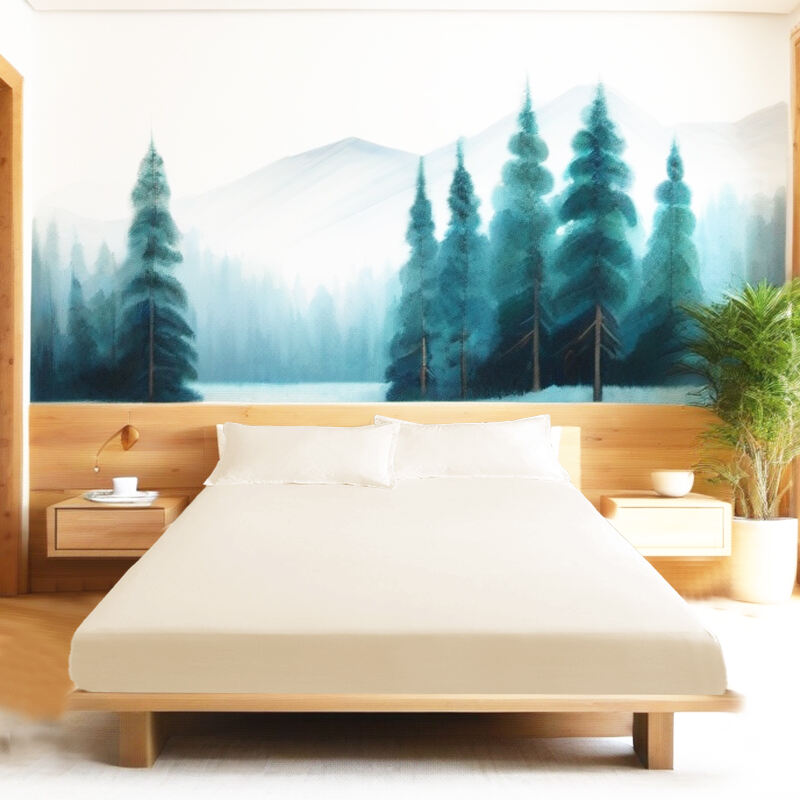
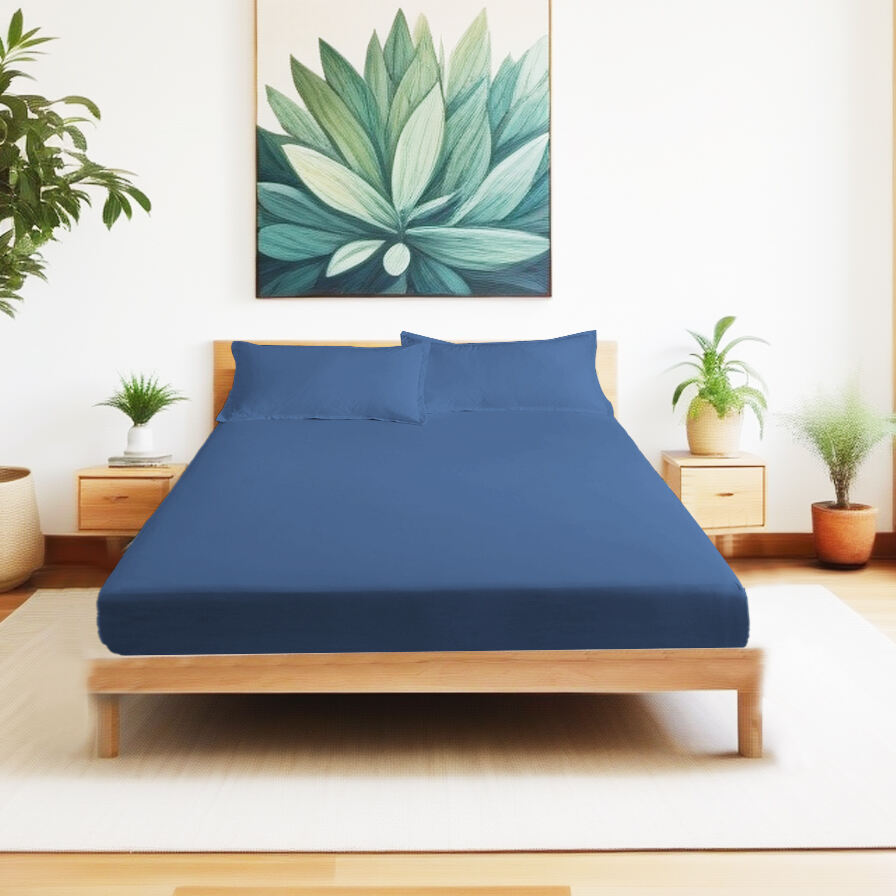

 EN
EN
 AR
AR HR
HR DA
DA NL
NL FR
FR DE
DE EL
EL IT
IT JA
JA KO
KO NO
NO PL
PL PT
PT RU
RU ES
ES SV
SV IW
IW VI
VI HU
HU TR
TR AF
AF MS
MS GA
GA